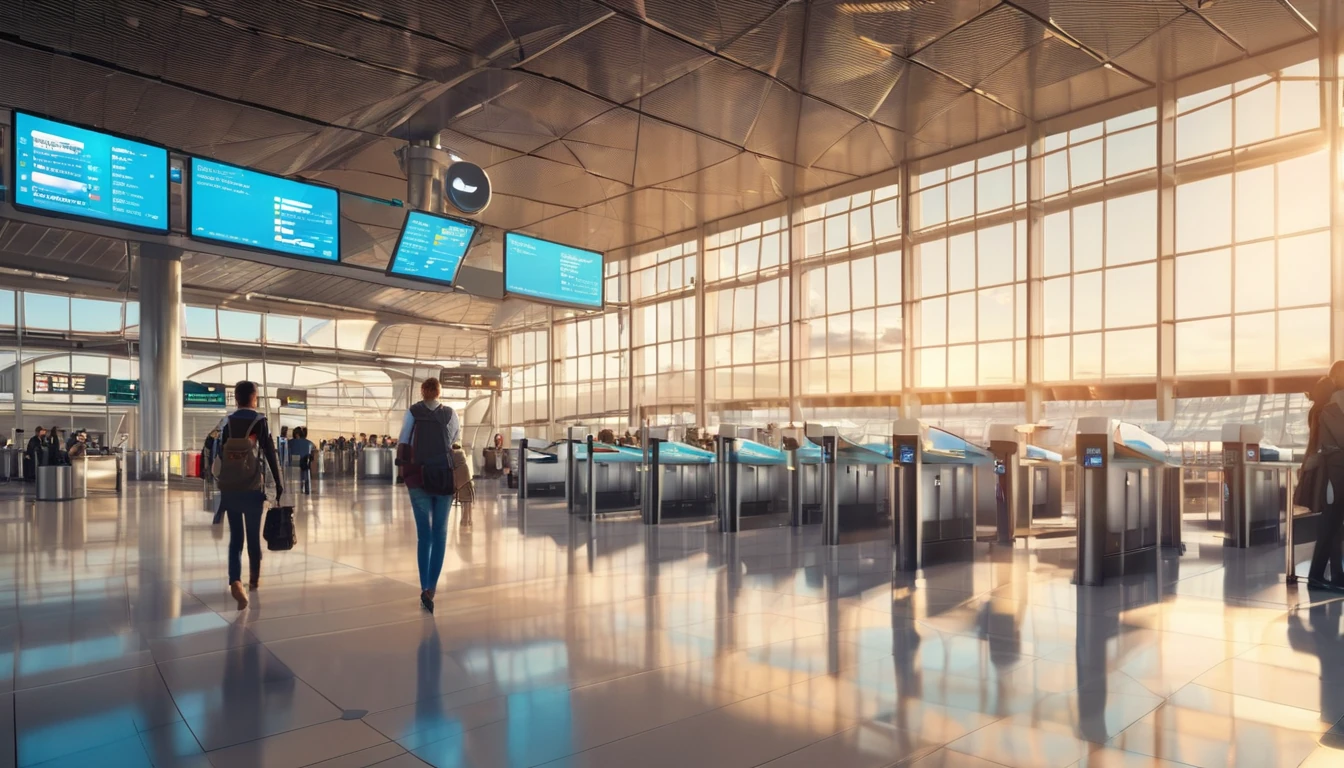Overview Berlin is one of Europe’s most visited capitals and a major rail hub, but what does connectivity actually feel like on the ground? We ran a berlin mobile speed test across three environments that matter to travellers: BER airport (airside and landside), central Mitte at street level, and the U‑Bahn underground. We also added an ICE high‑speed rail snapshot from Berlin Hbf towards Leipzig to capture performance at 250 km/h. This is a practical, traveller‑first report: clear numbers, what worked, what didn’t, and how to set up for fewer connection headaches. You’ll find a concise methodology, pro tips to minimise dropouts, and an open CSV you can reuse. If you’re planning a multi‑country trip, cross‑check your route on our Destinations page and consider a regional plan like Esim Western Europe. Teams needing SLA‑style reliability can head to For Business for multi‑SIM provisioning and failover options.
What we tested and how
- Networks: Deutsche Telekom, Vodafone, O2/Telefónica
- Tech observed: 5G (primarily n78 mid‑band and DSS), 4G/LTE in deeper indoor/underground zones
- Tools: Ookla Speedtest (UDP), HTTP download checks, DNS latency probes
- Devices: 2024/2025 flagship handsets with 5G SA/NSA support, eSIM provisioned
- Sampling windows: Off‑peak and peak (07:00–09:00, 12:00–14:00, 17:00–19:00)
- Metrics: Down/up throughput (Mbps), ping and jitter (ms), brief notes on environment
Limitations: Network conditions vary with time, congestion, phone model, and exact location. Underground results depend heavily on distributed antenna systems (DAS) and tunnel handovers. The ICE snapshot mixes window‑seat and aisle results; on‑board Wi‑Fi performance fluctuates with train load.
Key outcomes at a glance
- Fastest median in open outdoor Berlin: Deutsche Telekom, followed by Vodafone, then O2. Telekom often cleared 500–700 Mbps on n78 in Mitte.
- Underground U‑Bahn: Platforms are generally well covered; mid‑tunnel handover remains the weak spot. Expect 5–20 seconds of dips; deeper lines like U8 have more variability.
- BER airport: Strong 5G in Terminal 1 Check‑in and airside concourses; speeds taper on lower levels near rail platforms.
- ICE corridor: Direct cellular (your own SIM) outperformed on‑train Wi‑Fi for peak throughput. Telekom had the smoothest handovers at >200 km/h; O2 showed more jitter and short stalls.
- If you need consistent upload for calls: favour Telekom or Vodafone; O2’s uplink was adequate but spikier in motion.
BER Airport: where to expect the best signal
We measured across Departures (T1), Arrivals, security queues, and the rail level.
What we saw: - Departures (T1 Check‑in): - Deutsche Telekom 5G n78 frequently 500–700 Mbps down, 60–80 Mbps up, 15–25 ms ping. - Vodafone 5G n78 300–500 Mbps down, 40–70 Mbps up, 20–30 ms ping. - O2 5G DSS/4G mix 120–250 Mbps down, 25–45 Mbps up, 25–35 ms ping. - Airside near gates: Similar to Departures, slightly more variance as crowds swell. Video calls were stable on Telekom and Vodafone; O2 was fine for HD streaming. - Arrivals hall and baggage: More reflective surfaces and footfall increased jitter. Throughput decreased by ~20–30% versus Departures in peak times. - S‑Bahn/FEX rail level: Radio penetration is tougher. Expect 50–150 Mbps on Telekom/Vodafone and 30–90 Mbps on O2, with occasional ping spikes >40 ms.
Practical note: If you land and need to sync large files, do it before descending to the rail platforms. For multi‑country travellers, consider activating Esim Western Europe on approach to Berlin so you’re live on touchdown.
Mitte street‑level: fast and dense, with a few shadows
We sampled Alexanderplatz, Museum Island, Unter den Linden, and Hackescher Markt.
- Alexanderplatz: Open sky and dense cell grid. Telekom peaks >700 Mbps down; Vodafone often 400–600 Mbps; O2 around 200–350 Mbps. Pings 12–25 ms.
- Museum Island/Unter den Linden: Architectural canyons introduce shadowing. Expect 150–400 Mbps depending on your angle to the site antenna. Uploads remained healthy (35–80 Mbps) on Telekom and Vodafone.
- Hackescher Markt: Busy microcell environment with good mid‑band 5G. Median down ~500 Mbps on Telekom, ~380 Mbps on Vodafone, ~220 Mbps on O2 during lunch rush.
Pro tip: If a call becomes choppy on a corner, take two steps towards open sky or away from heavily tinted glass. Small positional changes can restore a clean n78 link.
U‑Bahn underground: platforms good, tunnels improving
Berlin’s U‑Bahn has broad 4G/5G coverage on platforms via DAS. In‑tunnel continuity is line‑dependent.
Highlights: - Platforms (U2 Alexanderplatz, U5 Museumsinsel, U6 Friedrichstraße, U8 Bernauer Str.): - Telekom: 180–350 Mbps down, 30–60 up, ping ~20–30 ms. - Vodafone: 130–260 Mbps down, 25–50 up, ping ~25–35 ms. - O2: 80–160 Mbps down, 15–35 up, ping ~30–45 ms. - Tunnels between stations: - Brief dips (5–20 s) still occur, especially on deeper U8 and in older segments without continuous DAS. - U5’s newer sections showed the most consistent handovers. - Station Wi‑Fi: Where present, it’s fine for messaging but often congested at peak; your cellular SIM will typically be faster and more predictable.
Checklist to keep calls alive underground: 1. Force 5G Auto/NSA rather than 5G SA if your device struggles with handovers. 2. Enable Wi‑Fi Calling but keep mobile data on; your phone may juggle gracefully on platforms. 3. Use a codec‑adaptive calling app (most modern meeting apps do this by default). 4. If a tunnel is coming, switch your meeting to audio‑only for 1–2 minutes.
ICE corridor snapshot: Berlin Hbf → Leipzig Hbf (via Südkreuz)
High‑speed rail is a stress test for mobility. We measured both direct device connectivity and DB’s on‑train Wi‑Fi.
What we saw at 200–250 km/h: - Direct device (window seat): - Telekom: 80–250 Mbps down, 20–60 up; smoothest cell reselection; few sub‑10‑second stalls. - Vodafone: 60–180 Mbps down, 15–45 up; occasional 10–20 s dips in cuttings. - O2: 30–120 Mbps down, 10–35 up; more variability and brief drops, especially after handovers. - Direct device (aisle seat): - Expect 20–40% lower throughput due to window coatings and body shadowing. - DB on‑train Wi‑Fi (aggregated cellular backhaul): - Typical 5–20 Mbps to client, sporadic bursts to 40 Mbps off‑peak. - Latency spikier (60–150 ms). Fine for email, chat, and SD video; less ideal for live screen‑sharing.
Pro tips for trains: - Sit near a window for stronger direct signal if you plan to hotspot your laptop. - Keep a secondary eSIM active for failover. A regional plan like Esim Western Europe gives you redundancy across carriers and borders. - Download meeting decks offline and record calls locally if critical. - Business travellers: ask us about pooled data and SIM rotation on For Business.
Practical recommendations for travellers
- Best single‑network experience in Berlin: Deutsche Telekom for raw speed and in‑motion stability; Vodafone is a solid second. O2 is improving and fine for typical streaming and calls.
- Underground reliability: Don’t bet meetings on mid‑tunnel continuity. Aim to join from platforms or street‑level.
- Airport workflows: Upload large files or download maps at Departures/airside before heading to the rail levels.
- Multi‑country plans: If Berlin is part of a wider itinerary, pick Esim Western Europe. If you’re coming from North America and hopping onward, review Esim North America and Esim United States.
- Side trips: Heading to Paris, Rome or Barcelona after Berlin? Keep the same eSIM active across regions with Esim France, Esim Italy or Esim Spain.
Open dataset (CSV)
You can copy and reuse the sample below. Timestamps local (CEST/CET). Location granularity is approximate for privacy.
timestamp,location,mode,carrier,tech,down_mbps,up_mbps,ping_ms,jitter_ms,notes 2025-10-18 08:42,BER T1 Check-in,airport,Telekom,5G n78,642,72,18,4,Light crowd 2025-10-18 08:47,BER T1 Check-in,airport,Vodafone,5G n78,418,58,22,6,Peak counter queue 2025-10-18 08:52,BER T1 Check-in,airport,O2,5G DSS,211,37,27,8,Two bars 2025-10-18 09:10,BER Airside A20,airport,Telekom,5G n78,588,65,19,5,Near window 2025-10-18 09:16,BER Arrivals,airport,Vodafone,5G n78,312,49,26,9,Baggage area 2025-10-18 09:23,BER Rail level,s_bahn,Telekom,LTE/5G,128,28,33,12,Lower level 2025-10-18 12:05,Alexanderplatz,street,Telekom,5G n78,732,81,14,3,Open square 2025-10-18 12:09,Alexanderplatz,street,Vodafone,5G n78,496,62,20,4,Lunch rush 2025-10-18 12:12,Alexanderplatz,street,O2,5G DSS,263,41,24,7,Stable 2025-10-18 12:40,Museum Island,street,Telekom,5G n78,384,57,21,6,Building shadow 2025-10-18 12:44,Unter den Linden,street,Vodafone,5G n78,352,53,23,7,Busy footfall 2025-10-18 13:05,Hackescher Markt,street,Telekom,5G n78,522,68,17,5,Microcells 2025-10-18 13:08,Hackescher Markt,street,Vodafone,5G n78,389,56,19,5,Good signal 2025-10-18 13:10,Hackescher Markt,street,O2,5G DSS,221,33,28,9,Bursty 2025-10-18 17:36,U2 Alexanderplatz,ubahn,Telekom,LTE/5G,298,54,24,8,Platform 2025-10-18 17:38,U5 Museumsinsel,ubahn,Vodafone,LTE/5G,214,39,28,9,Platform 2025-10-18 17:50,U8 Bernauer Str.,ubahn,O2,LTE,122,26,36,11,Platform 2025-10-18 17:54,U8 Tunnel Nbound,ubahn,Telekom,LTE,18,6,55,22,10s dip 2025-10-19 10:15,Berlin Hbf → Südkreuz,ice,Telekom,5G/LTE,146,41,35,10,Window seat 2025-10-19 10:47,Teltow countryside,ice,Vodafone,5G/LTE,92,28,41,14,Cutting 2025-10-19 11:22,Approach Leipzig,ice,O2,LTE,58,17,48,19,Brief stall 2025-10-19 11:30,ICE onboard Wi‑Fi,ice,DB Wi‑Fi,Multi,17,8,96,37,2nd class
Note: “5G DSS” indicates dynamic spectrum sharing on lower bands; peak rates lower than mid‑band n78.
Reproduce our berlin mobile speed test
Follow this in Berlin for comparable results: 1. Use a recent 5G phone; enable 5G Auto (NSA first). 2. Install Ookla Speedtest and one HTTP download tester; clear caches. 3. Test three times per location; note crowd level and whether you’re indoors, underground, or in motion. 4. Log metrics with timestamps and brief notes. Keep GPS coarse to protect privacy. 5. For U‑Bahn, run one test per platform and one mid‑tunnel (airplane mode toggle can help reset). 6. On ICE, test at window and aisle; add a run via the DB Wi‑Fi for comparison.
Pro tips to minimise pain
- Dual‑SIM redundancy: Keep two profiles (e.g., Telekom plus a regional plan like Esim Western Europe) and let the phone fail over on poor signal.
- Map caching: Pre‑download offline maps before entering tunnels or boarding ICE.
- Meeting hygiene: Switch to audio‑only before tunnels, and record locally to avoid cloud hiccups.
- Device placement: On trains, place your phone near the window; hotspot to your laptop only when needed to conserve radio headroom.
- Business teams: Pool data and apply per‑route policies via For Business. Partners can collaborate on larger corridor studies through our Partner Hub.
FAQ
- Which network is best overall in Berlin?
- In our sample, Deutsche Telekom delivered the fastest medians and the smoothest handovers in motion. Vodafone was consistently solid; O2 worked fine for everyday use but had more variability underground and on ICE.
- Is there reliable 5G in the U‑Bahn?
- Stations are well covered with 4G/5G and feel reliable. Mid‑tunnel performance is improving but still prone to short dips; plan calls from platforms or street level.
- How is connectivity at BER airport?
- Strong in Departures and airside with mid‑band 5G; Arrivals has slightly higher jitter. The rail level is usable but slower due to signal penetration limits.
- Does ICE on‑train Wi‑Fi beat using my own SIM?
- Not for peak speeds. The Wi‑Fi is adequate for email and messaging, but direct cellular via a good carrier and window seat usually performs better for heavy tasks.
- I’m travelling beyond Germany—do I need a separate plan?
- Not necessarily. A regional eSIM like Esim Western Europe covers multiple countries. If your trip spans the US and Europe, explore Esim North America and Esim United States.
- Where can I see more city results or plan my route?
- Check our live and upcoming coverage on Destinations. If you’re a provider or venue operator, see collaboration options on the Partner Hub. For multi‑SIM fleets and SLAs, visit For Business.
Next step: Planning Berlin plus a few European stops? Set yourself up with Esim Western Europe so you land connected and stay that way across borders.




